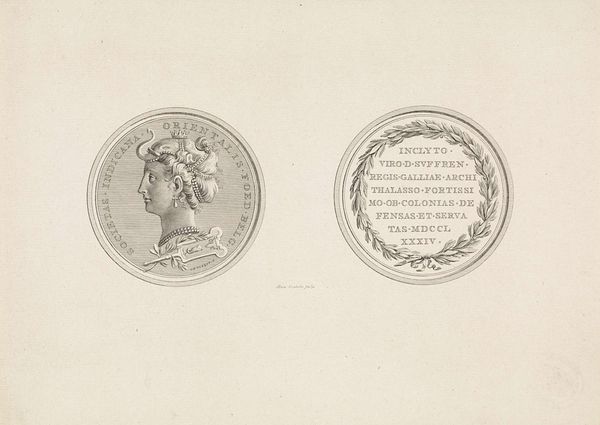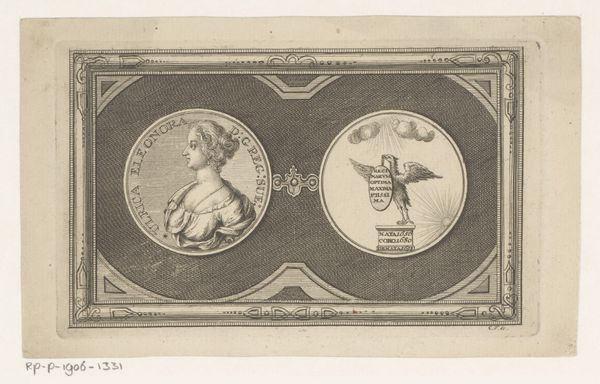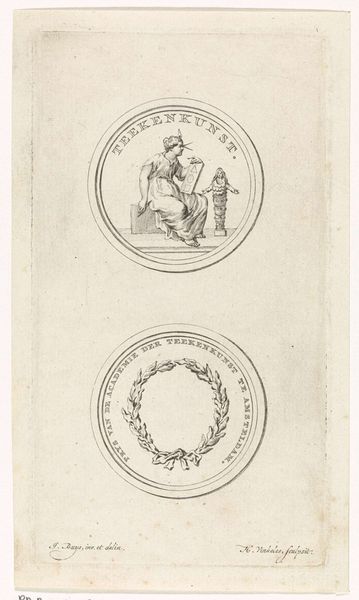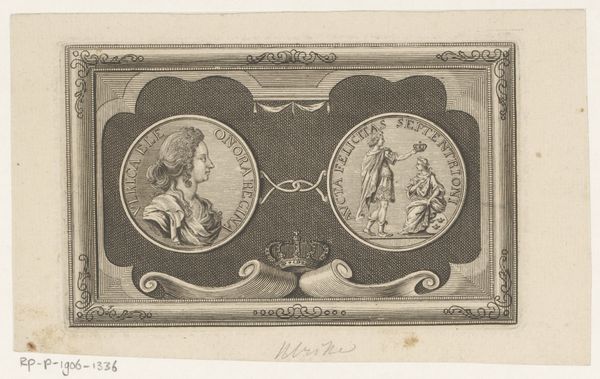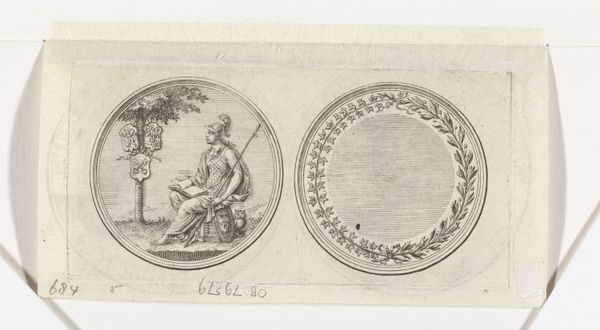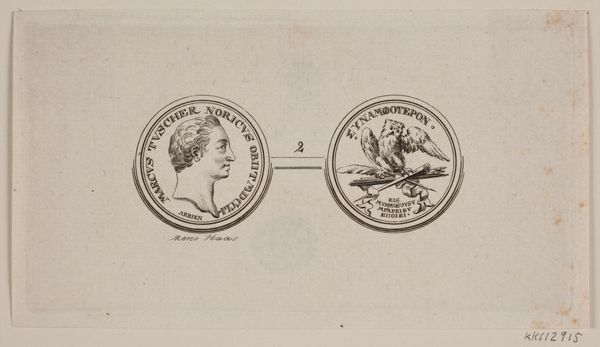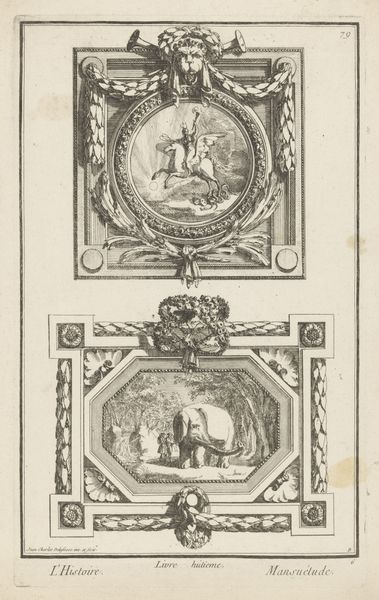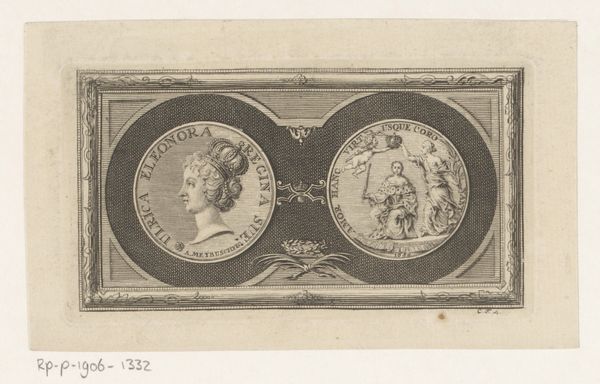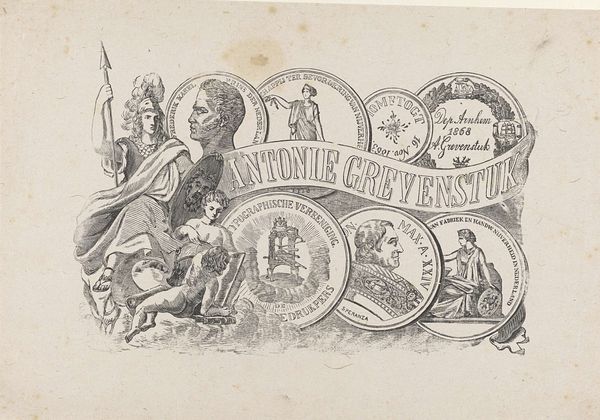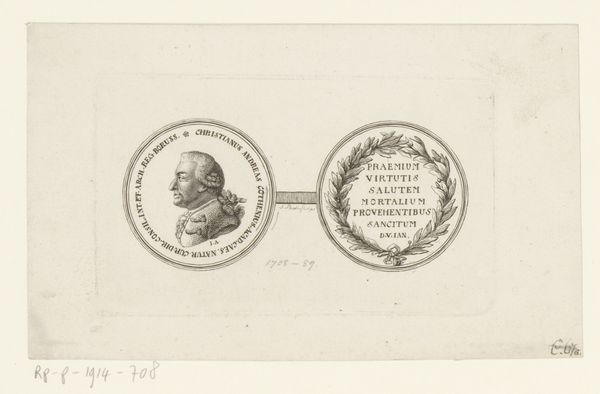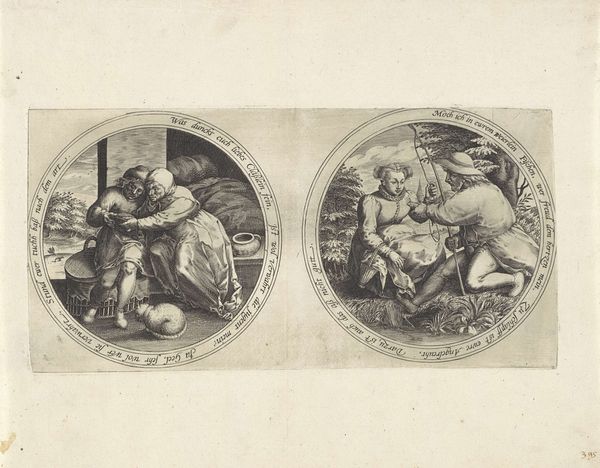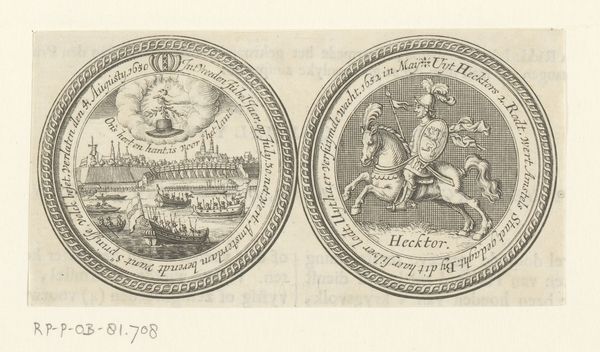
drawing, print, paper, engraving
#
portrait
#
drawing
#
neoclacissism
# print
#
landscape
#
classical-realism
#
bird
#
paper
#
line
#
engraving
Dimensions: height 51 mm, width 93 mm
Copyright: Rijks Museum: Open Domain
Curator: Here we have Reinier Vinkeles's "Penning in een ornamentele omlijsting" from 1776. It’s currently held at the Rijksmuseum. Editor: The level of detail is really impressive, especially considering it's just lines on paper. It feels almost sculptural because of the meticulous etching, giving it weight. Curator: Exactly. Vinkeles was a master of engraving. Notice how the composition employs classical motifs within this decorative frame—very typical of Neoclassical printmaking. The inscription circling the symbolic imagery alludes to civic duty and memory. Editor: I’m drawn to the tactile nature of the printmaking process itself. The act of carving, inking, and pressing, all those steps involved, it transforms an idea into a tangible object, laden with social implications tied to craft and dissemination. Curator: It's interesting you bring that up, considering the role prints played in disseminating ideas of citizenship and governance during the Enlightenment. These images circulated widely, shaping public opinion. Look at the figure on the right side of the print - a figure presenting. Editor: He stands very prominently there, atop of that blocky pillar as though presented as some form of offering or leader figure. And opposite the sun breaks through, so the material contrasts highlight very clever symbolic depictions. But more simply there are these dual impressions of image-making, as they have different symbolic roles within society? Curator: Yes, absolutely. This object encapsulates a desire to imbue everyday life with virtue through classically inspired imagery. Think of the accessibility too; prints democratized art ownership at the time. The motifs borrow and are repeated everywhere! Editor: A fascinating object, reflecting the intricate interplay between the hand-made and wider social forces, which makes the symbolic impact even more fascinating. Curator: Indeed. It allows us a peek into the visual and political landscape of the late 18th century and how images were part of everyday dialogue and civic life.
Comments
No comments
Be the first to comment and join the conversation on the ultimate creative platform.
